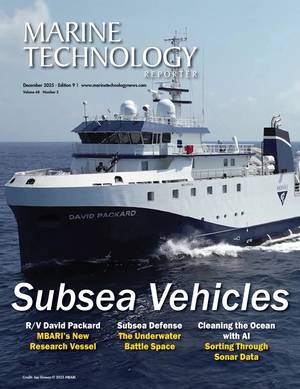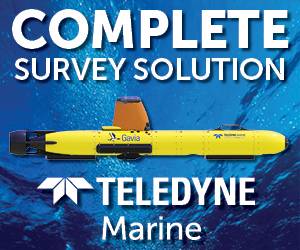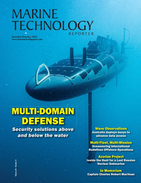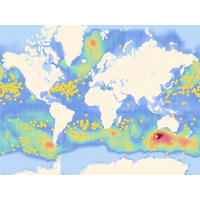
NOAA and Sofar Advance Weather Forecasting
AI to fine-tune model parameters.GFDL and Sofar’s experimental coupled model has already improved Sofar’s global marine weather forecast accuracy. For example, the model’s forecasts of wind speed are now outperforming other global forecast models in the South Atlantic Ocean and Indian Ocean tropics.By assimilating observations made by Sofar’s global network of Spotter buoys at the air-sea interface, GFDL and Sofar fill the observational gaps left by other data sources. Spotters, for example, deliver highly accurate wave and weather data amidst the heavy convection, rain, and
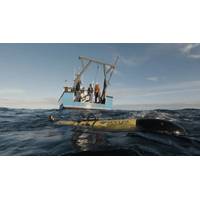
Redwing Glider Successfully Launched in Global Ocean Mission
and Pilot.Redwing is embarking on the five-year Sentinel Mission, where it will become the first autonomous underwater vehicle (AUV) to circumnavigate the globe.Redwing’s journey will take it across the Gulf Stream towards Europe, then south to Gran Canaria, onward to Cape Town, across the Indian Ocean to Australia and New Zealand, through the Antarctic Circumpolar Current, and eventually back to the Atlantic via the Falkland Islands, Brazil, and the Caribbean.The mission is a collaboration between Teledyne Marine and Rutgers University. Engineers from Teledyne, alongside more than 50 students
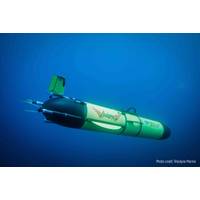
Underwater Autonomous Glider Departs to Circumnavigate the Globe
, remote regions of the globe.Redwing’s first leg will see it ride the Gulf Stream south of Martha’s Vineyard toward Europe, before sweeping south to stop at Gran Canaria off the coast of North West Africa. Its next leg will take it to Cape town in South Africa, before crossing the Indian Ocean to stop at Perth in Western Australia, then on to Wellington, New Zealand. It will then navigate the Antarctic Circumpolar Current — the most powerful current on Earth — taking it on its longest leg to the Falkland Islands. From here there will be possible stops in Brazil and the Caribbean
Subsea Cables Accellerate Africa’s AI Potential
by 2050. Telecommunications and AI companies are aiming to transform the potential they see there by offering greater capacity for harnessing AI.African digital infrastructure company SEACOM is launching SEACOM 2.0, a subsea cable system it says is poised to redefine connectivity across the Indian Ocean Basin, Middle East, Mediterranean, and Southern Europe.The company is addressing Africa’s explosive demand for AI, cloud, and real-time data services. The region is home to 2.9 billion people across 33 nations, with a surging middle class, it says.By 2030, networks are expected to carry
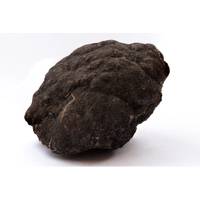
India Signs Deepsea Mining Exploration Deal with International Seabed Authority
India has signed a 15-year contract with the International Seabed Authority for exclusive rights to explore polymetallic sulphides in the Indian Ocean, the government said on Saturday.Polymetallic sulphides, which form around hydrothermal vents on the seafloor, contain high concentrations of metals such as copper, zinc, gold and silver - essential for clean energy technologies, electronics, and other high-tech applications.India is the first country to hold two ISA contracts for polymetallic sulphides. An earlier agreement with the United Nations body, which regulates mineral exploration and exploitatio
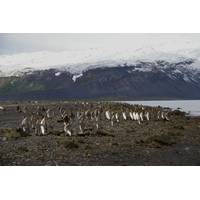
Australian Researchers Head to Heard Island
Island is a land of fire and ice, home to Australia’s only active volcano, with 12 major glaciers carving through the landscape and penguin and seal colonies dotting the coastline.With the nearby McDonald Islands, they are one of Australia’s most remote territories, located in the southern Indian Ocean, 4,000km south-west of the Australian mainland.The campaign, using Australia's icebreaker, RSV Nuyina, will be the Australian Antarctic Program's first visit to Heard Island in more than 20 years and will check on the state of the islands’ unique flora and fauna.“HIMI illustrates

NOC Awarded $3.5m to Explore Expanding Ocean Desertification
temperatures rise, scientists are concerned about the long-term impact of this expansion on marine ecosystems and the Earth's climate, which would reduce ocean productivity, affecting marine food webs and the ocean’s role as a carbon sink.The new project, called EXPAND, will focus on the Indian Ocean subtropical gyre, the least understood of these ocean deserts. It includes partners from France, USA, Canada and South Africa.Project lead and NOC senior scientist Dr. Mar Benavides highlights the urgency of understanding what drives the expansion of ocean deserts—and whether biological

Fugro Gifts Survey Equipment to CSIRO to Bolster Australian Ocean Research
ongoing support of global ocean science initiatives and aligns with its active role in support of the United Nations Decade of Ocean Science for Sustainable Development.The survey systems are capable of operating at depths up to 6,000 m. They were once used by Fugro in the deep waters of the Southern Indian Ocean during the search for MH370. Fugro no longer needs them in daily operations and is happy to donate them to CSIRO.The systems will now be used onboard CSIRO’s research vessel Investigator, enabling their Australian ocean and environmental research such as high-resolution deep-sea mapping

A New Approach to Studying the Air-Sea Flux
of multiple in-situ co-located variables at a level of accuracy not provided by satellites or numerical models.This is something USVs are good at, but currently there are large gaps in USV monitoring including in the Pacific Ocean and high latitudes. Additionally, USVs have not yet been active in the Indian Ocean and South Atlantic.Even where USV manufacturers, universities and research institutions have pioneered ground-breaking USV capabilities, the data has been siloed within individual projects, say the researchers.They call for a global network approach that could transform the patchwork of independent
 December 2025
December 2025
